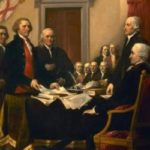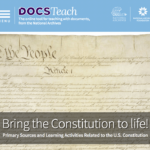The 14th Amendment wrote the Declaration of Independence’s promise of freedom and equality into the Constitution. It transformed the Constitution forever. And it’s at the heart of what many scholars refer to as America’s “Second Founding.” Even so, the 14th Amendment is the focus of many of the most important constitutional debates (and Supreme Court cases) today. In many ways, the history of the modern Supreme Court is really a history of modern-day battles over the 14th Amendment’s meaning. Nearly every constitutional case that you care about today turns on the 14th Amendment.
Colonial Influences (Lesson Plan and Powerpoint)
American colonists had some strong ideas about what they wanted in a government. These ideas surface in colonial documents, and eventually became a part of the founding documents like the Declaration of Independence and Constitution. But where did they come from? This lesson looks at the Magna Carta, Mayflower Compact, English Bill of Rights, Cato’s Letters and Common Sense.
The Story of the Bill of Rights

This documentary tells the story of these individual freedoms that often are taken for granted today. But in 1787, when they were first discussed at the Constitutional Convention, the Founding Fathers rejected them. Why were these rights controversial then? The full story about these rights, including what they say and what they mean, is explained. Ten short videos examine each of the amendments in the Bill of Rights.
Bring the Constitution to Life!

Locate primary sources from the holdings of the National Archives related to such topics as “checks and balances,” “representative government,” all 27 amendments, and other concepts found in the Constitution. This special home page devoted to the U.S. Constitution also features activities to share with students, such as “The Constitution at Work,” which uses primary sources to demonstrate the Constitution in action in our everyday lives.